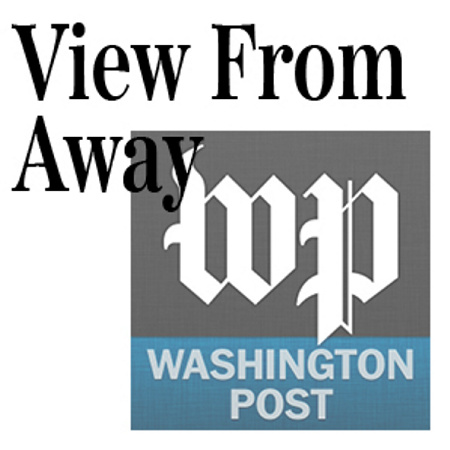Americans will purchase 700,000 drones during this year’s holiday season, according to the Consumer Electronics Association. Ordinary people and, eventually, small businesses will use these cheap flying devices to do all sorts of things, from aerial photography to crop-dusting to just having fun. That’s good, but the profusion of drones also presents real safety hazards for the country’s airspace that federal authorities are only beginning to get a handle on.
The Federal Aviation Administration announced Monday that it would require recreational drone users to register their unmanned aerial vehicles with the government or face the threat of steep fines or jail time. Anyone who purchases a drone weighing between a half-pound and 55 pounds after Dec. 21 will have to register it before its first flight; those who already own drones will have to register them by mid-February.
One goal is to make the rules of the airspace clear. Recreational drone users will have to certify that they have read the FAA’s guidelines, which bar flying close to airports and above a few hundred feet. Another aim is to make errant drones more traceable. Registered users will get unique numbers that will have to be on their drones.
As with any new federal rule, it comes with some controversy. Old-school model airplane hobbyists resent having to jump through new hoops. But if anything, the government has been too slow and too modest in its regulating. That’s only partially the FAA’s fault: Congress has tied the agency’s hands.
Registration should be only the starting point. Airplane pilots have reported more than 1,000 drone sightings in sensitive airspace this year, according to the FAA. Though there hasn’t been a major incident so far, drones could cause severe damage to larger aircraft if sucked into a jet engine. Unmanned aerial vehicles also could be used to attack government buildings; a (thankfully harmless) drone flew over the White House without warning or permission this year.
Drones can be kept out of sensitive airspace with geo-fencing technology, which uses onboard GPS to prevent the drone from flying into restricted zones. Drones should come with transponders that make them visible to conventional radar. Standards also might be needed to ensure that the communications devices linking drones to users are robust. True, it probably would be possible for criminals to skirt these safety mechanisms. But at the very least, accidental bad behavior would drop. Congress should require, or allow the FAA to require, such safety equipment.
Meanwhile the FAA should, carefully, take the fetters off commercial drones. Businesses could use drones for all sorts of purposes — Amazon.com, whose chief executive, Jeffrey P. Bezos, owns The Washington Post, is experimenting with package delivery by drone — but interested companies still must get a special waiver from the FAA to fly them. Instead, the FAA should promulgate universal rules that protect airspace safety but allow businesses more leeway to make good on the tantalizing possibilities drones offer. Industry has been grounded long enough.
Editorial by The Washington Post
Send questions/comments to the editors.



Comments are no longer available on this story